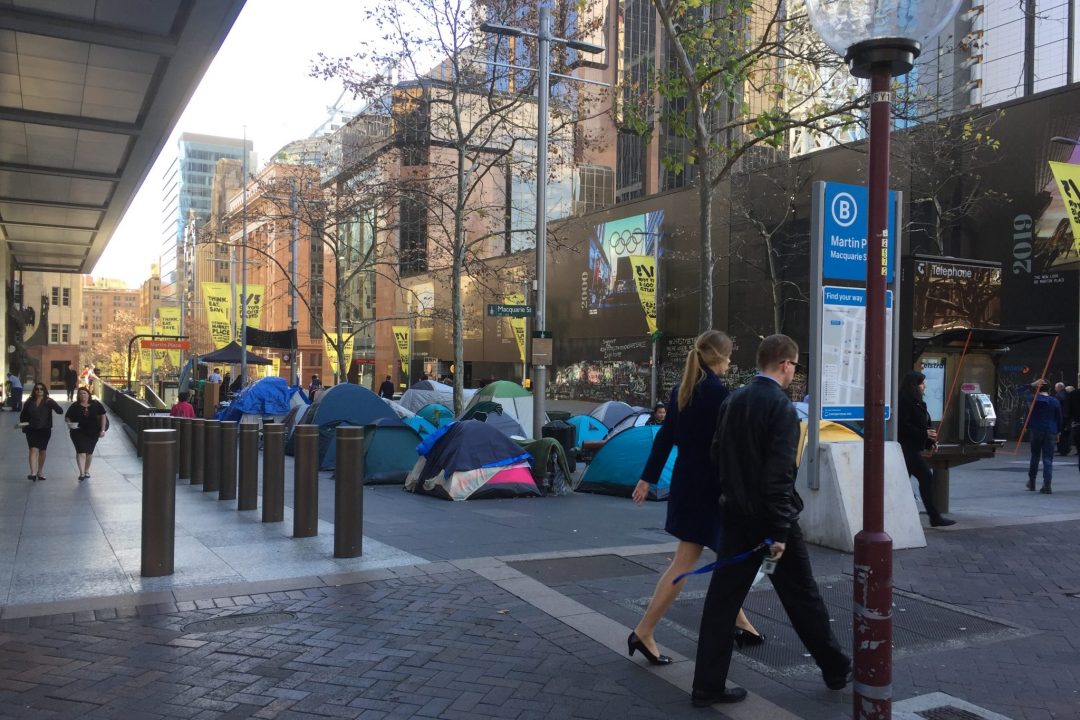
The recent City of Sydney Street Count found that the number of people sleeping rough in inner Sydney has decreased by 24 percent compared to the same time last year. That translates to 100 less people sleeping on the streets. In many respects, this is an extraordinary result – the largest reduction in rough sleeping in any 12-month period since the Street Counts began in 2010.
However, behind these welcome statistics lies the fact that for women who are homeless, little appears to have changed.
According to a 2015 survey of rough sleepers in Sydney, over 80 per cent were male. When women become homeless their experience is often quite different from the typical male rough sleeper bedding down in a park, a bus shelter or under a shop awning. It often involves being forced to couch surf in the home of a friend or family member, or trying to secure a place in a women’s refuge. Their situation is generally not as visible as the person sleeping rough. Yet according to the most recent ABS statistics for homelessness, women make up 44 per cent of the 105,000 homeless people in Australia.
The Australian Institute of Health and Welfare say the figure is higher; 59 per cent of people supported by specialist homelessness services are female. The fastest growing group to access these services are older women, aged over 55 (a 52 percent increase since 2011-12). Approximately half of these women are unable to obtain immediate accommodation because there simply isn’t enough accommodation available.
Domestic and family violence is currently the major reason that women seek assistance from homelessness support services in Australia.
It seems likely that NSW Government programs to rapidly rehouse people after the Martin Place homeless encampment last year have made a serious dent in the numbers of people sleeping rough. This is, of course, welcome. But on International Women’s Day it’s important to ask: How do these initiatives address women who are homeless, given the overwhelming majority of rough sleepers are men? And given the chronic under-supply of social and affordable housing in Sydney, why is it that public housing properties have become available for men sleeping rough in inner Sydney as part of this program, while women fleeing domestic violence and forced to seek assistance from specialist homelessness services are not similarly prioritised for “rapid rehousing”?
The reality is that their experience is not as conspicuously visible. Yet women (particularly older women) and female-headed households are faced with a higher risk of homelessness than men, largely due to the all-too-common experience of domestic violence, combined with the fact that women experience higher levels of poverty than men, having lower rates of employment and levels of pay.
It is also true that women who experience family violence and are at risk of homelessness are vulnerable to other related legal problems including family law, tenancy problems and credit and debt problems. Statistics from the Public Interest Advocacy Centre’s Homeless Persons’ Legal Service indicate that women made up 32 per cent of the people who sought assistance from our clinics between 2010 and 2017. These women were more likely than men to present with a credit and debt problem, a tenancy problem and a family law problem. In addition, women were more likely to have multiple legal problems. This illustrates the strong relationship between women’s experience of domestic violence and homelessness, as well as the clustering of various legal problems associated with domestic violence, including family law problems, housing and tenancy problems, debt and financial problems.
Many of these women are faced with a service system that is stretched to the limit, as well as a cocktail of complex legal and financial problems stemming from their domestic violence and relationship breakdown.
For some of these women there is also often deep-rooted trauma that manifests in anxiety, depression, low confidence, despondency and disempowerment. These are amplified where children are involved, particularly if they have to regularly move from temporary accommodation, given the pressing demands of ensuring stable schooling arrangements for their children while at the same time pursuing applications for long-term social housing.
This week, as we mark International Women’s Day, we should not lose sight of the thousands of women who cannot access safe, secure, stable accommodation in Australia. For these women, their story is one of #MeToo. It is therefore critical that our response to homelessness doesn’t leave them out.
Dr Louis Schetzer, Senior Policy Officer, Homelessness, Public Interest Advocacy Centre.